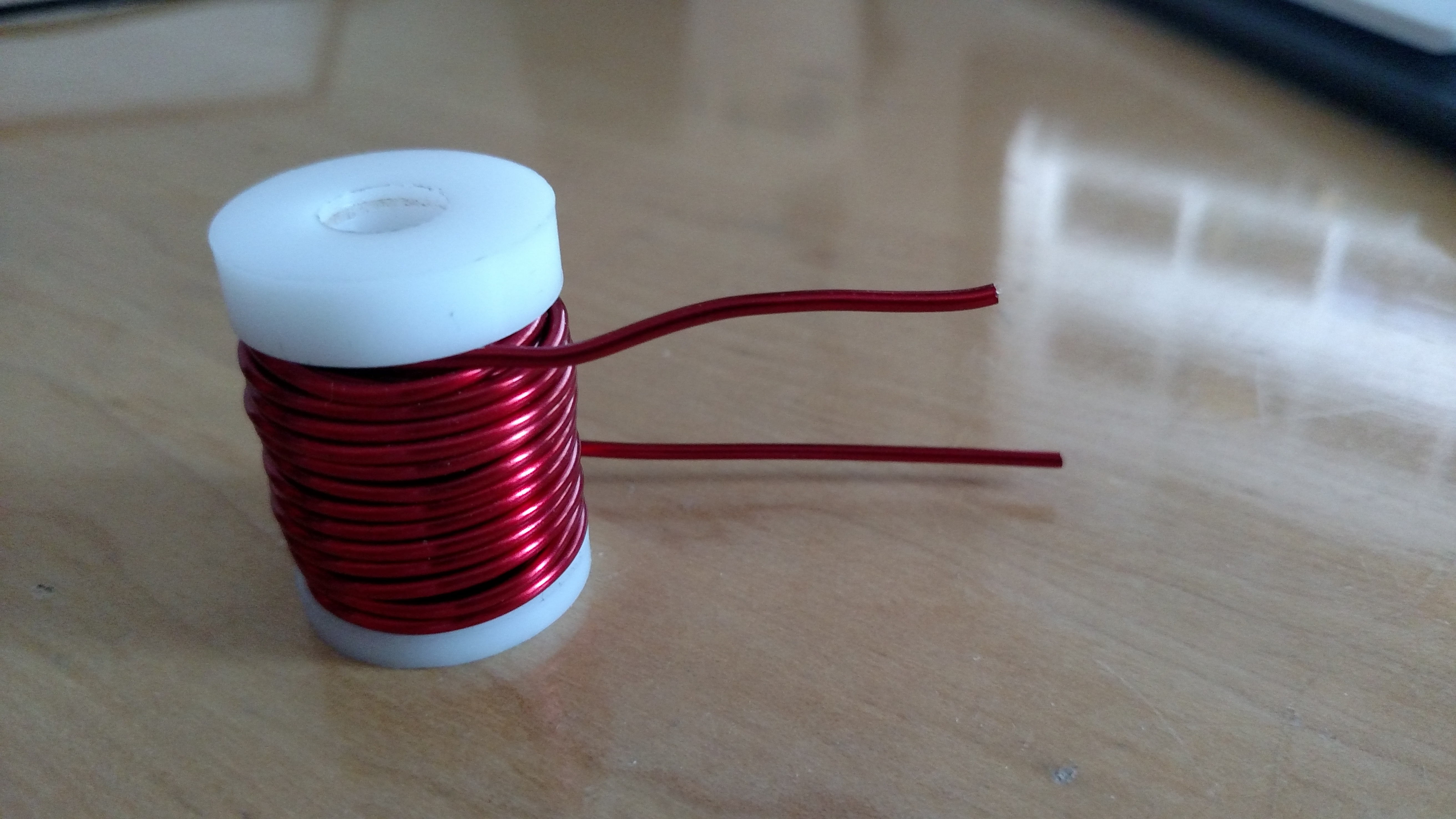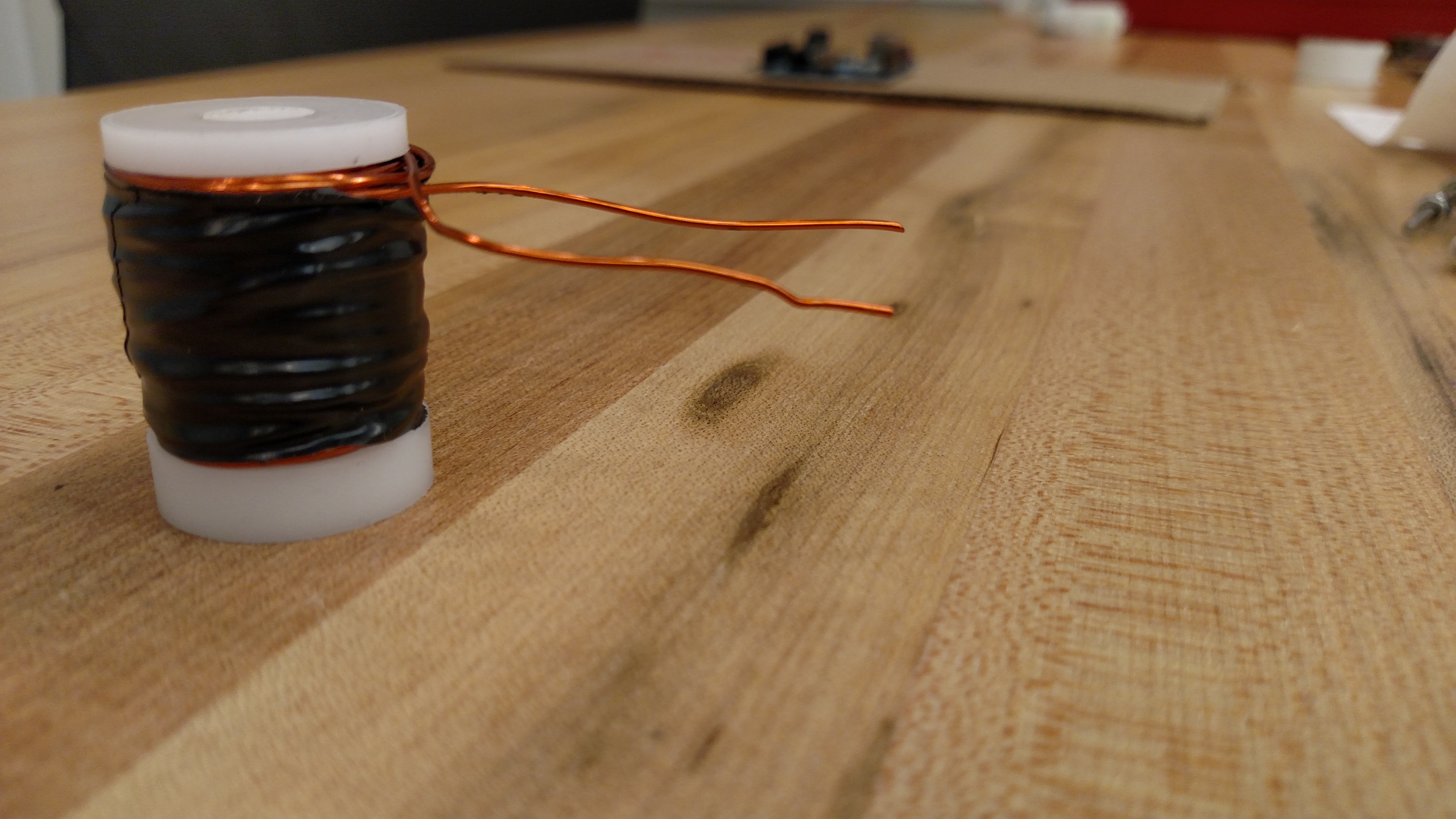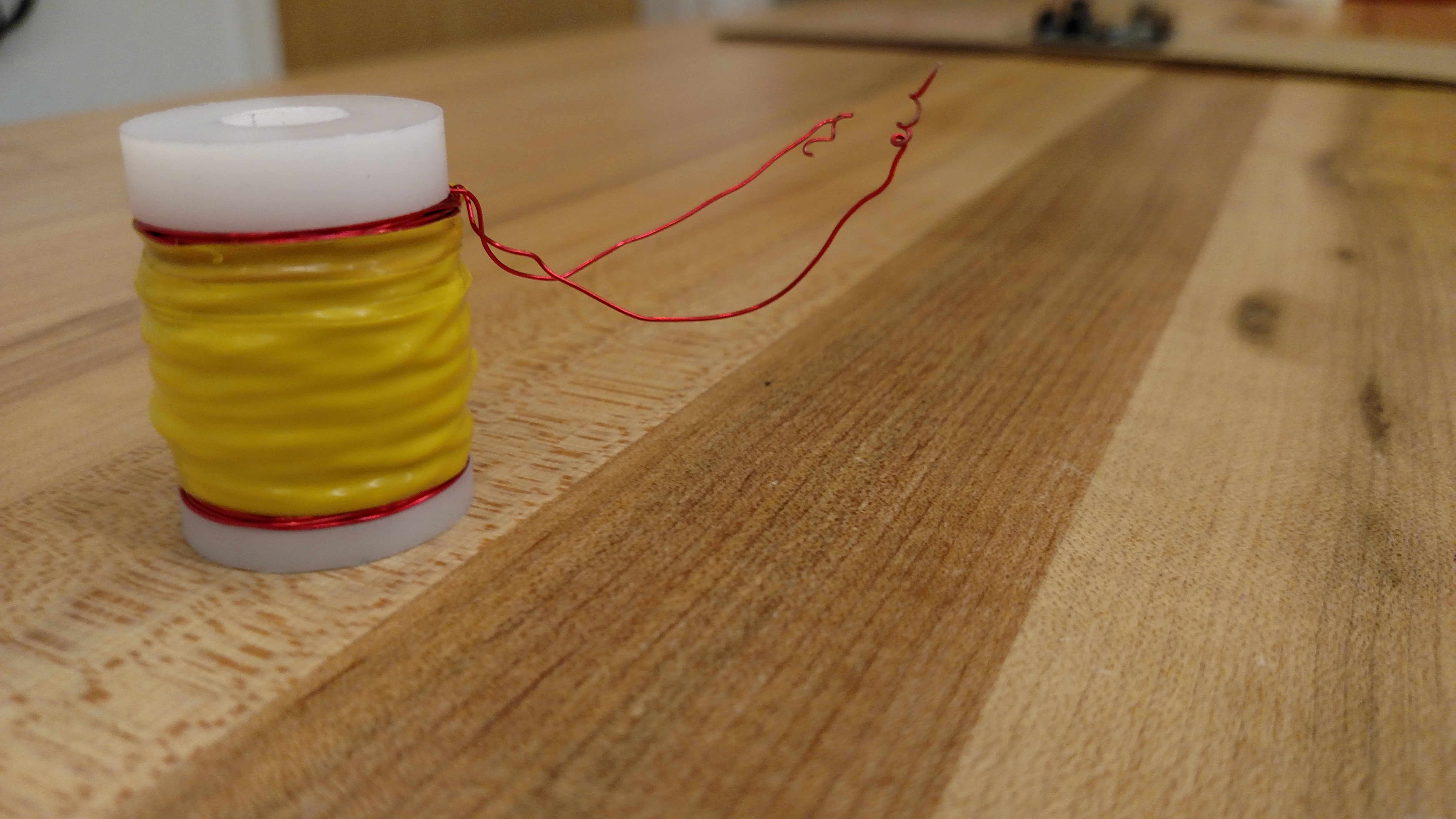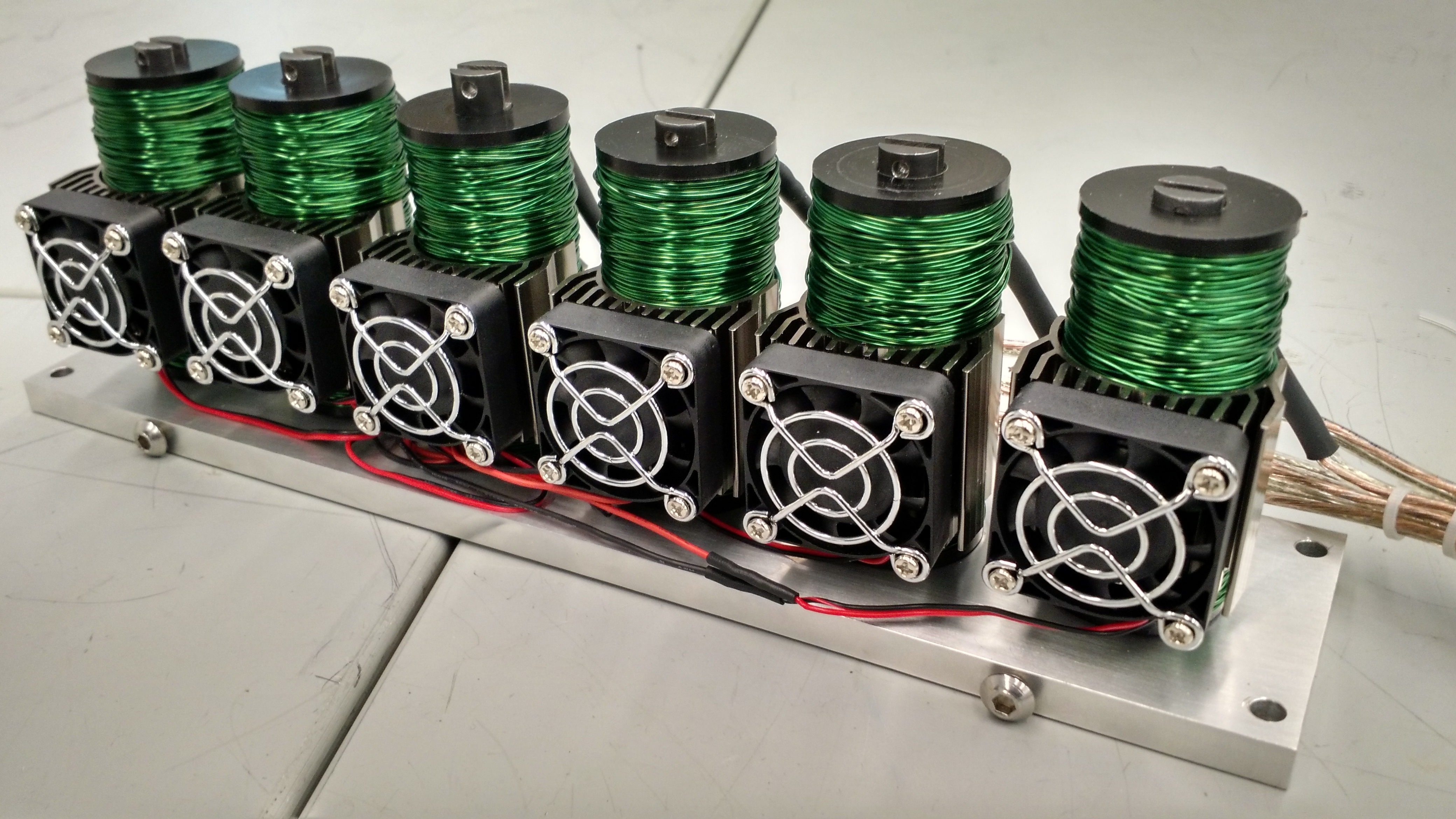Solenoids
Who needs explosions when you have electricity?
We had two major inspirations for this project. The first being that the MEs on the team are all working together on restoring a car which uses an Inline 6 engine. The second being hours of youtube videos of solenoid engines we watched, where we decided that we could probably do it better.
Sprint 1: Induction?
What even is electricity?
So solenoids, what are they? Essentially, a solenoid is a tightly packed coil of insulated wire, where when a current is passed through the coil a magnetic field is generated. For our purposes, this means that by passing current through a coil around a hollow cylinder, we can draw in a ferric material. This is great news, because engines work by moving a mass linearly in a cylinder, so instead of using explosions to push a mass out, we're using electricity to draw it in!
In the first iteration of our engine, our solenoid was just a completely non optimised random plastic tube we found, that we wrapped some wire around. Primitive? Yes. But did it work? Also yes! Thus, we had a proof of concept showing that by passing a current through a coil, we could generate enough magnetic force to draw in a ferric mass.
Sprint 2: Ohm my!
Optimizing solenoids!
One of our primary goals going into sprint 2 was to better understand solenoid design, and to pick out a gauge of wire to use in our final solenoids.


This second coil uses 20AWG wire, had a resistance of .35 ohms, and required 129 turns.

This final coil used 24AWG wire, leading to a resistance value of 4.75 ohms, and 650T. This current limited the power supply we were using, meaning we could actually use the peak power output of the power supply. Thus, for Sprint 2's engine, we used 24AWG wire. However, scaling up to our final product, we decided to move forwards with 20AWG wire, knowing that as we scaled up, the number of turns would bring us to the point of being able to current limit our much larger, final power supply.
Throughout our solenoid design process, we referred to several solenoid design documents, but primarily one writted by Paul H.Schimpf from the Eastern Washington University. These documents helped us come to our final solenoid dimensions, and assisted in our wire choice.
Sprint 3: Copper and Delrin
Creating our final solenoids out of 3 feet of Delrin, and 10 pounds of copper.
For our final solenoids, we decided on a cross sectional area of 3 inches by 0.875 inches. This means that each of our final solenoids is quite a lot bigger than any previous solenoid we had fabricated, as you can see below.
By the end of the third sprint, we had all of our solenoids turned out of Delrin. Which meant that for sprint 4, all we had left to do was wind them.
Sprint 4: Use the (electromagnetic) force!
Finishing our solenoid winding, and putting everything together.
Although we had one solenoid wound, it took over an hour and half to do by hand. It also didn't help that we were using slightly different wire (thinner insulation) for the rest of the solenoids, so we had to unwind the one we had already wound. Winding these by hand would have obviously been rather unpleasant. So we used put a sharpie in the solenoids, and grabbed the sharpie with a drill. We then put our wire spool on a vertical rod, and used the drill to wind the solenoids. This lead to a lower winding factor (how efficiently packed our wires are), but saved us hours of work. After getting all of our solenoids wound, this is what they looked like.

These final solenoids run a resistance of around 6 ohms, which is inline with our optimal resistance from the previous sprint. This allows us to fully utilize the power output of our power supply, without being current limited at a voltage too low to produce any meaningful power.